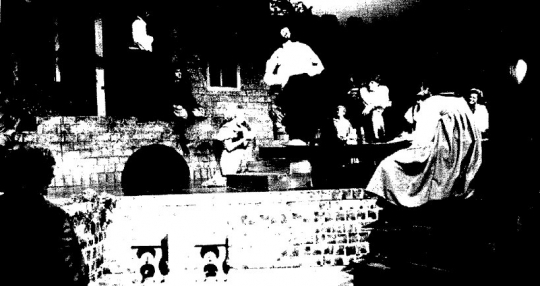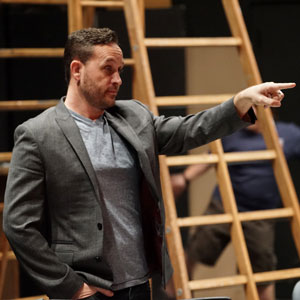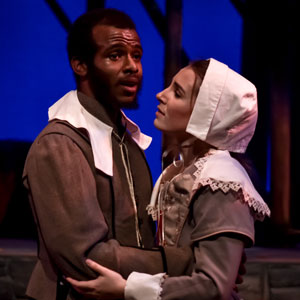FC's 'Shrew' anything but 'tame'
— Fullerton College Hornet - Greg Lutz - Friday, October 25th, 1985
A young maid braids her auburn hair by a trickling well. A laundry woman shoos a mischievous youth from her wash basket. Lasses gossip a midst a waking village. This isn't a scene from jolly old England, but one from Fullerton College on Friday night, Oct. 18, at the Campus Theatre.
On that night, I attended the FC presentation of William Shakespeare's "The Taming of the Shrew." Having written the preview article about the show, I was anticipating many things, but was surprised by others.
Once I found my seat, I noticed the stage was lighted, even though the house lights had not yet dimmed. The stage was illuminated enough to reveal an immaculate set. It authentically portrayed a 16th century town, from the iron gates and ramparted walls to the running well.
Quietly and serenely strolled a lone figure on the stage, at first mistaken for a stage hand. The garb he wore< revealed him to be an actor, and momentarily he was joined by another, and another, and another.
The scene gave the effect of early morning, with the villagers waking up one by one.
The main characters of the play arrive in the form of a traveling band of actors, called "The Kings Company," who inform the villagers as well as the audience that they will present a play; and so the show really begins.
"Taming of the Shrew" contains many minor as well as major roles. The villagers are creatively used in that while they are watching the actors perform a play, they become part of it, as they fill the roles of cooks, merchants, and house servants.
All of the characters were quite agreeable and alive. The entrance of Kathy Van Shaik, as the Shrew, was an explosion of vivacious animation. Thor Edgell, who played Petruchio, made an equally interesting entrance aside a black horse, Bingh. A round of applause to the people who kept Bingh calm during his stay at FC.
An honorable mention goes to Todd Langwell, who played Hortensio. At one part of performance, his pants button decided to abandon him and, in a sense, left him hanging. He went on with his part, holding his own, and provided a humorous performance.
The costumes made at FC by Melo Hoyt-Heydon and her stichers were excellent. They seemed detailed reproductions of the time. The color and variety of cloths used gave emphasis to the characters. Rough cloth and earthy tones were used for the villagers. Velvets and silk in rich hues were used for the upper class.
The most pleasant surprise came at intermission, which is usually a time to be bored while waiting for the play to begin again. I walked outside for a breath of air and found myself transported back to Elizabethan England. In addition to a concession stand, music and crafts from the 16th century were being displayed in front of the theatre. I enjoyed conversing with some of the craftsmen and thought the whole idea unique.
Though a novice at Shakespeare, the play was easy to follow and enjoyable. My only regret is that it didn't play for two weeks.








